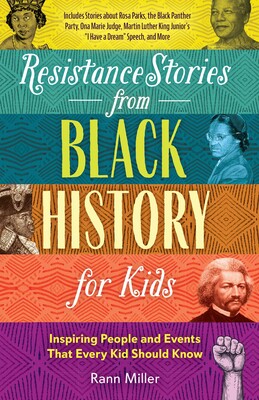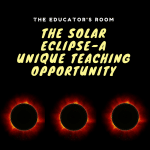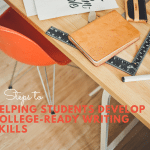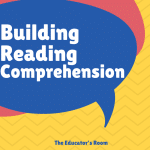Have you signed up for The Educator’s Room Daily Newsletter? Click here and support independent journalism!
Black History Month is drawing to a close, but educators know that Black history should be a yearlong part of their curriculum. That’s why I can’t think of a better time to announce Rann Miller’s new book Resistance Stories from Black History for Kids. Miller is an educator and writer whose focus on history and articulating one’s voice benefits students and readers every day. Miller’s work is published on numerous platforms, including Edutopia, Education Week, the Philadelphia Inquirer, and the Washington Post. His book, which is already available for pre-sale, will be available in stores everywhere on March 7, 2023.
The book shares many untold stories of Black history and Black heroes dating back to 3100 BCE. While the book was written on a level with grades 4-8 in mind, Miller hopes that people of all ages and walks of life will pick up the book and discover historical figures and truths that continue to inspire faith, hope, and the courage to resist the injustices of today.
The Educator’s Room: What inspired you to write this book?
Rann Miller: I wanted to share something that was new to the kid education space that isn’t often discussed. Resistance is something that we don’t teach young people, especially in the elementary grades. This book specifically addresses Black resistance, or fighting against White supremacy in all its forms, throughout the U.S., as well as the African diaspora. Types of resistance discussed in this book include insurrection, agitation through writing and speaking out, and passing, among others – all the things Black people had to do to fight White supremacy.
TER: What do you hope this book will achieve in the lives of your readers and in society as a whole?
Rann: I hope that it achieves three things. First, I hope the book teaches that Black people of African descent were active in their liberation. Black freedom didn’t come by White benevolence. It came from resistance. Next, I hope it helps Black people understand who they are and that deep within them is still that resistance against White supremacy. I hope it gives them a better identity. Black people don’t come from a passive history. They come from people who fought back. Lastly, I hope it is an example, a light, that these stories need to be and will continue to be shared. Some want to prevent others from learning the truth, teaching the truth, and living the truth, but it won’t work. I hope this book and the animosity it may create will remind those who seek to hide history that Black people will never stop speaking the truth.
TER: This book features many Black heroes. Out of those mentioned, which hero inspires you most and why?
Rann: I would have to say Harriet Tubman. She is the greatest American hero ever, maybe the greatest American in history, because of what she did and who she was. As a Christian, she began the instances in which Christian Black people felt their faith was leading them to resistance. She escaped enslavement and then went back and rescued people. Then, she went to New Jersey and worked so she could go back and rescue more people. She is the embodiment of the Black radical tradition. She was not scared of anything. Her life is just amazing to have done all the things that she has done.
I think the best way for me to honor her is to tell her story and tell it honestly. We can learn from her story and look to her for inspiration and apply her belief in and use of resistance to the ways Black people are oppressed still today.
TER: The amount of research you did before writing this book is astounding. Why was the research so important, and how did it benefit your readers?
Rann: I already knew about half of the information featured in the book. I learned the other half during my research and studies while working on the project. Most of my research was found in academic journals and books written by scholars.
The beauty of the book is all the footnotes. If people want to find more information, they can look at the footnotes to begin their search. It’s painstakingly researched, so as a reader, you know you’re getting good information about these people and about these stories.
When some people read the book, their goal will be to discredit it. But when you look at these sources put out by these renowned scholars and information that has been around for 50-60 years, it’s really hard to refute that.
TER: As a parent, how do you plan to use this book?
Rann: I want to sit down at night with my kids before bed and read it with them. That’s the coolest thing about the whole book. I get to leave this with my kids when I pass on, and they can teach it to their kids and tell them their grandfather did this.
TER: Would you like to say anything in closing to your readers?
Rann: I’m very proud of this book. I’m very proud of what I put together. To undertake this kind of work, I’m humbled by it. I just tried to offer my contribution to the space of literature, Black people, and Black history. I wanted to make my ancestors proud and leave this to my family.
The goal of writing this book was putting information out there for people to get their hands on. My goal is that this one is well-received and that people are looking for this type of knowledge so I can write more in the future.

Editor’s Note: If you enjoyed this article, please become a Patreon supporter by clicking here.






